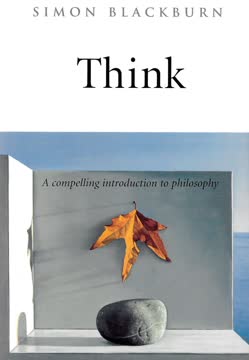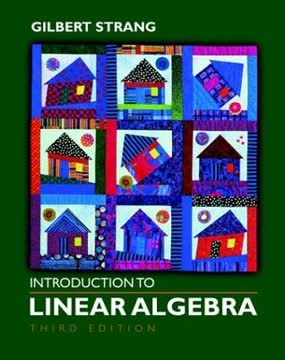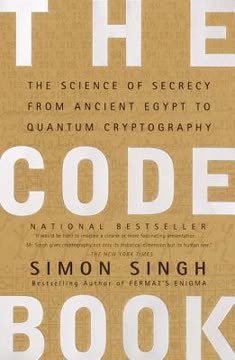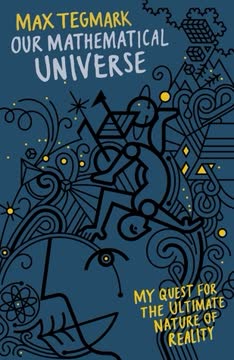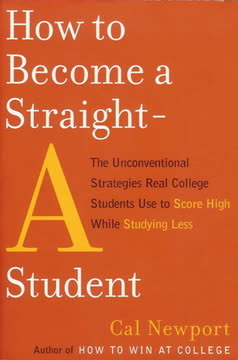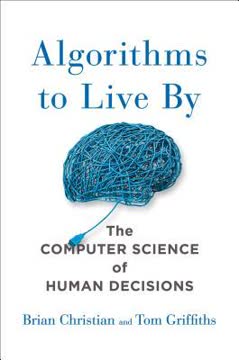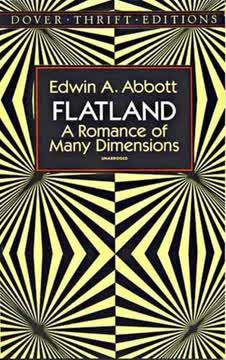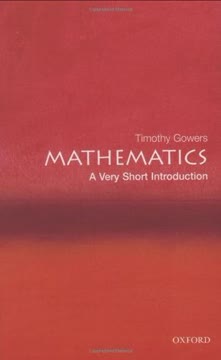نکات کلیدی
1. پذیرش تغییر: ریاضیات دانشگاهی یک چالش جدید است
ریاضیات دانشگاهی قرار است حتی برای باهوشترین و سختکوشترین دانشجویان چالشبرانگیز باشد.
تغییر در تمرکز. ریاضیات دانشگاهی تفاوت قابل توجهی با ریاضیات مدرسه دارد. تأکید از محاسبه به اثبات تغییر میکند و از دانشجویان میخواهد که به روشهای جدیدی با مفاهیم ریاضی تعامل کنند. این انتقال میتواند چالشبرانگیز باشد، اما بخشی طبیعی از رشد تحصیلی است.
انتظارات واقعبینانه. هدف این نیست که همه چیز را بلافاصله درک کنید. طبیعی است که در ابتدا با مفاهیم جدید دست و پنجه نرم کنید. موفقیت در ریاضیات دانشگاهی به معنای توسعه درک عمیق در طول زمان است، نه تسلط فوری. دانشجویان باید به دنبال درک ایدهها و اصول اصلی باشند و بپذیرند که درک کامل هر جزئیات ممکن است قابل دستیابی یا ضروری نباشد.
سازگاری و رشد. برای موفقیت، دانشجویان باید:
- تکنیکهای مطالعه خود را تنظیم کنند
- مهارتهای تفکر انتزاعی را توسعه دهند
- یاد بگیرند که اثباتها را بسازند و درک کنند
- شهود ریاضی را پرورش دهند
- چالشها را به عنوان فرصتهایی برای رشد بپذیرند
2. تسلط بر هنر تفکر انتزاعی و ساخت اثبات
اثباتها، استنتاجهای منطقی و اشیاء
اشیاء انتزاعی. ریاضیات دانشگاهی به طور گسترده با اشیاء انتزاعی سروکار دارد. این شامل مفاهیم آشنایی مانند اعداد و توابع و همچنین ایدههای پیشرفتهتری مانند عملیات باینری و تقارنها میشود. یادگیری تفکر در مورد این اشیاء انتزاعی برای درک ریاضیات سطح بالاتر ضروری است.
ساخت اثبات. اثباتها در ریاضیات دانشگاهی مرکزی هستند. آنها نیاز دارند به:
- درک تعاریف و قضایا
- استدلال منطقی
- ارتباط واضح ایدههای ریاضی
دانشجویان باید تکنیکهای مختلف اثبات را تمرین کنند:
- اثبات مستقیم
- اثبات با تناقض
- اثبات با استقراء
- اثبات یکتایی
توسعه این مهارتها زمان و تمرین میطلبد، اما آنها پایه تفکر ریاضی پیشرفته را تشکیل میدهند.
3. توسعه عادات مطالعه مؤثر و مهارتهای مدیریت زمان
برای هدایت دانشجویان به بررسی بیشتر چنین نکاتی و جلوگیری از تکرار مطالبی که در جای دیگر به خوبی بیان شدهاند، من بخش مطالعه بیشتر را در پایان هر فصل گنجاندهام.
مطالعه مؤثر. خواندن ریاضیات با خواندن سایر موضوعات متفاوت است. این نیاز به مشارکت فعال دارد، که اغلب شامل کار کردن بر روی مثالها و اثباتها به صورت مستقل است. سیستمی برای:
- یادداشتبرداری
- خلاصهسازی مفاهیم کلیدی
- ایجاد نقشههای مفهومی
- مرور و بازبینی منظم
مدیریت زمان. دورههای دانشگاهی با سرعت بیشتری نسبت به مدرسه پیش میروند. مدیریت زمان مؤثر حیاتی است:
- ایجاد یک برنامهریزی ترم
- توسعه یک برنامه مطالعه هفتگی
- اولویتبندی وظایف بر اساس فوریت و اهمیت
- اختصاص زمان برای بازبینی و تمرین حل مسئله
رویکرد متعادل. هدف این است که بخش بزرگی از مطالب را به خوبی درک کنید، به جای اینکه سعی کنید همه چیز را به صورت سطحی پوشش دهید. بر روی مفاهیم مرکزی و کاربردهای آنها تمرکز کنید.
4. مشارکت فعال با سخنرانیها و استفاده از منابع موجود
اگر میخواهید از یک سخنرانی یاد بگیرید، باید به آن بروید.
مشارکت فعال. سخنرانیها منبع اصلی اطلاعات در دانشگاه هستند. برای به حداکثر رساندن ارزش آنها:
- به طور منظم شرکت کنید
- با مرور مطالب قبلی آماده شوید
- یادداشتهای مؤثر بگیرید
- وقتی مفاهیم نامشخص هستند، سوال بپرسید
- محتوای سخنرانی را به زودی پس از آن مرور و خلاصه کنید
استفاده از منابع. دانشگاهها سیستمهای پشتیبانی مختلفی ارائه میدهند:
- ساعات اداری با اساتید
- کلاسهای آموزشی و حل مسئله
- مراکز پشتیبانی ریاضی
- منابع آنلاین و محیطهای یادگیری مجازی
در صورت نیاز به کمک دریغ نکنید. مشارکت با این منابع میتواند به طور قابل توجهی درک و عملکرد شما را بهبود بخشد.
5. پرورش مهارتهای حل مسئله و شهود ریاضی
همه باید این را تشویقکننده بدانند—ممکن است کشف کنید که در چیزی که هرگز حتی به آن فکر نکردهاید، واقعاً استعداد دارید.
استراتژیهای حل مسئله. یک جعبه ابزار از رویکردهای حل مسئله توسعه دهید:
- مشکلات پیچیده را به بخشهای کوچکتر تقسیم کنید
- به دنبال الگوها و شباهتها بگردید
- از نتیجه مطلوب به عقب کار کنید
- از تجسم و نمودارها استفاده کنید
- قضایا و تکنیکهای شناخته شده را به صورت خلاقانه به کار ببرید
ساخت شهود. شهود ریاضی با تجربه به دست میآید. برای توسعه آن:
- بر روی مثالهای زیادی کار کنید
- تغییرات مسائل را بررسی کنید
- سعی کنید نتایج را قبل از محاسبه پیشبینی کنید
- درباره اینکه چرا راهحلها کار میکنند، تأمل کنید
پذیرش چالشها. از مشکلات دشوار دوری نکنید. آنها اغلب ارزشمندترین تجربیات یادگیری را فراهم میکنند و میتوانند به درک عمیقتر مفاهیم ریاضی منجر شوند.
6. نوشتن ریاضیات به صورت واضح و حرفهای
اگر میخواهید قابل استخدام باشید و موفق شوید، بدیهی است که مهم است که در حل مسائل مهارت داشته باشید. اما همچنین مهم است که بتوانید به طور قانعکنندهای درباره هر چیزی که فکر میکنید بهترین راهحل است، ارتباط برقرار کنید.
ارتباط واضح. نوشتن ریاضیات به خوبی برای:
- نشان دادن درک
- کسب نمرات بهتر
- آمادهسازی برای آینده شغلی
جنبههای کلیدی نوشتن ریاضی خوب:
- استفاده از زبان دقیق و نشانهگذاری صحیح
- ساختاردهی منطقی استدلالها
- ارائه توضیحات واضح برای هر مرحله
- استفاده از مثالها و ضد مثالهای مناسب
ارائه حرفهای. نوشتن ریاضی را به عنوان یک مهارت جداگانه برای توسعه در نظر بگیرید. تمرین نوشتن اثباتها، توضیحات و راهحلها به صورت واضح و مختصر. این مهارت در محیطهای تحصیلی و حرفهای ارزشمند خواهد بود.
7. تعادل بین موفقیت تحصیلی و رشد شخصی و آمادگی شغلی
ریاضیدانان وقتی که افراد به اشتباهات اشاره میکنند، سپاسگزارند، زیرا معمولاً اصلاح آنها بلافاصله بسیار آسانتر از بازگشت و انجام آن در آینده است.
توسعه جامع. زندگی دانشگاهی فرصتهایی فراتر از تحصیلات ارائه میدهد:
- به باشگاهها یا انجمنهای ریاضی بپیوندید
- در سمینارها و سخنرانیهای مهمان شرکت کنید
- به کارآموزی یا موقعیتهای کاری فکر کنید
- مهارتهای نرم مانند کار تیمی و ارتباطات را توسعه دهید
آمادگی شغلی. از اوایل به گزینههای شغلی فکر کنید:
- مناطق مختلف ریاضیات را بررسی کنید
- در نظر بگیرید که مهارتهای ریاضی چگونه در صنایع مختلف به کار میروند
- از خدمات شغلی مشاوره بگیرید
- با فارغالتحصیلان و حرفهایها شبکهسازی کنید
یادگیری مداوم. ریاضیات یک حوزه وسیع و در حال تکامل است. ذهنیت یادگیری مادامالعمر را پرورش دهید:
- درباره تحولات جدید ریاضی کنجکاو باشید
- فراتر از مواد درسی مطالعه کنید
- به تحصیلات تکمیلی یا فرصتهای تحقیقاتی فکر کنید
به یاد داشته باشید، تبدیل شدن به یک ریاضیدان موفق یا استفاده از مهارتهای ریاضی در سایر حرفهها سفری است که فراتر از سالهای کارشناسی شما ادامه دارد. چالشها و فرصتهایی که با مطالعه ریاضیات در سطح دانشگاهی همراه است را بپذیرید.
آخرین بهروزرسانی::
FAQ
1. What is How to Study for a Mathematics Degree by Lara Alcock about?
- Comprehensive study guide: The book explains how to approach university-level mathematics, focusing on the transition from procedural school math to abstract reasoning, proofs, and independent study.
- Skills and mindset: It covers essential study skills, time management, and the mindset needed to succeed in a mathematics degree.
- Not a textbook: Rather than teaching specific math content, it provides strategies for learning, understanding, and thriving in undergraduate mathematics.
- Preparation for challenges: The book prepares students for both the intellectual and practical demands of university mathematics.
2. Why should I read How to Study for a Mathematics Degree by Lara Alcock?
- Bridges educational gaps: The book addresses the common struggles students face when moving from school to university mathematics, such as understanding proofs and abstract concepts.
- Research-based strategies: It draws on mathematics education research to offer practical advice and proven study techniques.
- Boosts efficiency and confidence: Readers learn how to study smarter, manage their time, and communicate mathematics clearly, leading to greater academic success and enjoyment.
- Normalizes challenges: The book reassures students that initial struggles are normal and provides strategies to overcome them.
3. What are the key takeaways from How to Study for a Mathematics Degree by Lara Alcock?
- Shift to abstraction: University mathematics requires a move from procedural calculation to abstract reasoning, focusing on definitions, theorems, and proofs.
- Active, independent learning: Success depends on developing skills for independent reading, writing, and synthesizing mathematical ideas.
- Effective study habits: Techniques like summarizing notes, creating concept maps, and prioritizing study topics are emphasized.
- Growth mindset: Persistence, flexibility, and learning from mistakes are crucial for adapting to the demands of a mathematics degree.
4. What are the main differences between school mathematics and university mathematics according to Lara Alcock?
- Procedures vs. proofs: School math emphasizes calculation and following instructions, while university math focuses on constructing and understanding proofs.
- Abstract thinking: University mathematics involves thinking about numbers, functions, and other concepts as abstract objects, often organized hierarchically.
- Greater responsibility: Students must make more decisions about which methods to use and how to approach problems, rather than relying on explicit instructions.
- Conceptual challenges: The shift to abstraction and formal reasoning can be a significant adjustment for many students.
5. How does Lara Alcock define and explain abstract objects in university mathematics?
- From processes to objects: Concepts like numbers and functions are initially understood as processes but are later treated as objects in their own right.
- Hierarchical structure: Mathematical objects are organized in layers, with higher-level objects depending on the understanding of lower-level ones.
- New object types: The book introduces relations, binary operations, and symmetries as mathematical objects, explaining their properties and significance.
- Importance for advanced math: Thinking of these entities as objects is essential for engaging with higher-level mathematics.
6. What advice does How to Study for a Mathematics Degree by Lara Alcock give about understanding and using mathematical definitions?
- Precision and operability: Mathematical definitions are exact, with no exceptions, and provide clear criteria for use in proofs.
- Inclusion and exclusion: Students should consider both examples that fit a definition and those that do not to fully grasp its boundaries.
- Adjusting intuition: Formal definitions may differ from everyday intuition, especially in boundary cases, requiring students to refine their understanding.
- Foundation for reasoning: Mastery of definitions is crucial for constructing and understanding proofs.
7. How does Lara Alcock describe the role and structure of theorems in university mathematics?
- Logical necessity: Theorems express relationships that must be true once definitions are established, often in “if… then…” form.
- Understanding through examples: Students are encouraged to examine examples and analyze the logical structure to comprehend theorems.
- Precise language: The book emphasizes the importance of using logical terms like “if,” “only if,” and quantifiers correctly.
- Avoiding misinterpretation: Everyday meanings of logical words can differ from their mathematical usage, so precision is essential.
8. What insights does How to Study for a Mathematics Degree by Lara Alcock provide about mathematical proofs and their importance?
- Proofs as logical arguments: Proofs demonstrate why theorems are true, starting from definitions and using logical deductions.
- Demystifying proofs: Many school-level calculations are simple proofs; university proofs are more formal but follow similar principles.
- Building coherent theory: Proofs help mathematicians understand how results fit into a larger, consistent framework.
- Practice in rigorous thinking: Engaging with proofs develops the logical reasoning skills central to advanced mathematics.
9. What are the common types of proofs and proof strategies discussed by Lara Alcock?
- Direct proof: Involves logically deducing the conclusion from the premises step-by-step.
- Proof by contradiction: Assumes the opposite of the desired result and shows this leads to a contradiction.
- Proof by induction: Proves a base case and then shows that if the statement holds for one case, it holds for the next, covering all natural numbers.
- Additional techniques: Includes proof by cases, uniqueness proofs, and algebraic manipulations to simplify arguments.
10. What strategies does Lara Alcock recommend for reading and understanding mathematics texts and notes?
- Active, independent reading: Students should develop skills to learn from written materials, not just lectures.
- Identifying structure: Recognize definitions, theorems, examples, and proofs to engage effectively with the material.
- Summarizing and mapping: Creating summary lists and concept maps helps synthesize information and see connections.
- Using examples and diagrams: Checking examples and using diagrams can clarify abstract concepts and aid memory.
11. How does How to Study for a Mathematics Degree by Lara Alcock address time management and overcoming panic?
- Planning and prioritization: The book suggests creating term and weekly plans, prioritizing tasks, and breaking study into manageable chunks.
- Realistic expectations: Students are encouraged to accept that not all tasks will be completed perfectly and that setbacks are normal.
- Dealing with panic: When overwhelmed, making a prioritized list and working through tasks in short, timed sessions can restore control.
- Seeking support: Utilizing university resources and checking progress with a trusted person can help manage stress and maintain progress.
12. What does Lara Alcock say about interacting with lecturers, tutors, and peers in a mathematics degree?
- Active engagement: Students should take initiative in seeking help, preparing questions, and using office hours or tutorials.
- Effective communication: Clear, polite communication—especially in emails and group settings—is important for productive interactions.
- Group study: Working with peers can enhance understanding, but students should avoid distractions and ensure meaningful engagement.
- Utilizing support services: The book encourages early and regular use of university resources like support centers and counseling for academic and personal growth.
نقد و بررسی
کتاب چگونه برای یک مدرک ریاضی مطالعه کنیم عمدتاً نقدهای مثبتی دریافت میکند و خوانندگان از راهنماییهای بینشمند آن برای گذار به ریاضیات در سطح دانشگاه تمجید میکنند. بسیاری از افراد آن را برای درک انتظارات در یک برنامه مدرک ریاضی مفید میدانند و از پیشبینی نویسنده از سوالات و نگرانیهای رایج قدردانی میکنند. برخی از خوانندگان پیشنهاد میکنند که این کتاب زمانی بیشترین سود را دارد که قبل از شروع دانشگاه یا در اوایل دوره خوانده شود. چند منتقد اشاره میکنند که ممکن است برای دانشجویان پیشرفته یا کسانی که در رشتههای دیگر هستند کمتر مفید باشد. بهطور کلی، خوانندگان به راهنماییهای کتاب در مورد اثباتها، خواندن ریاضیات و تطبیق با زندگی دانشگاهی ارزش مینهند.
Similar Books
